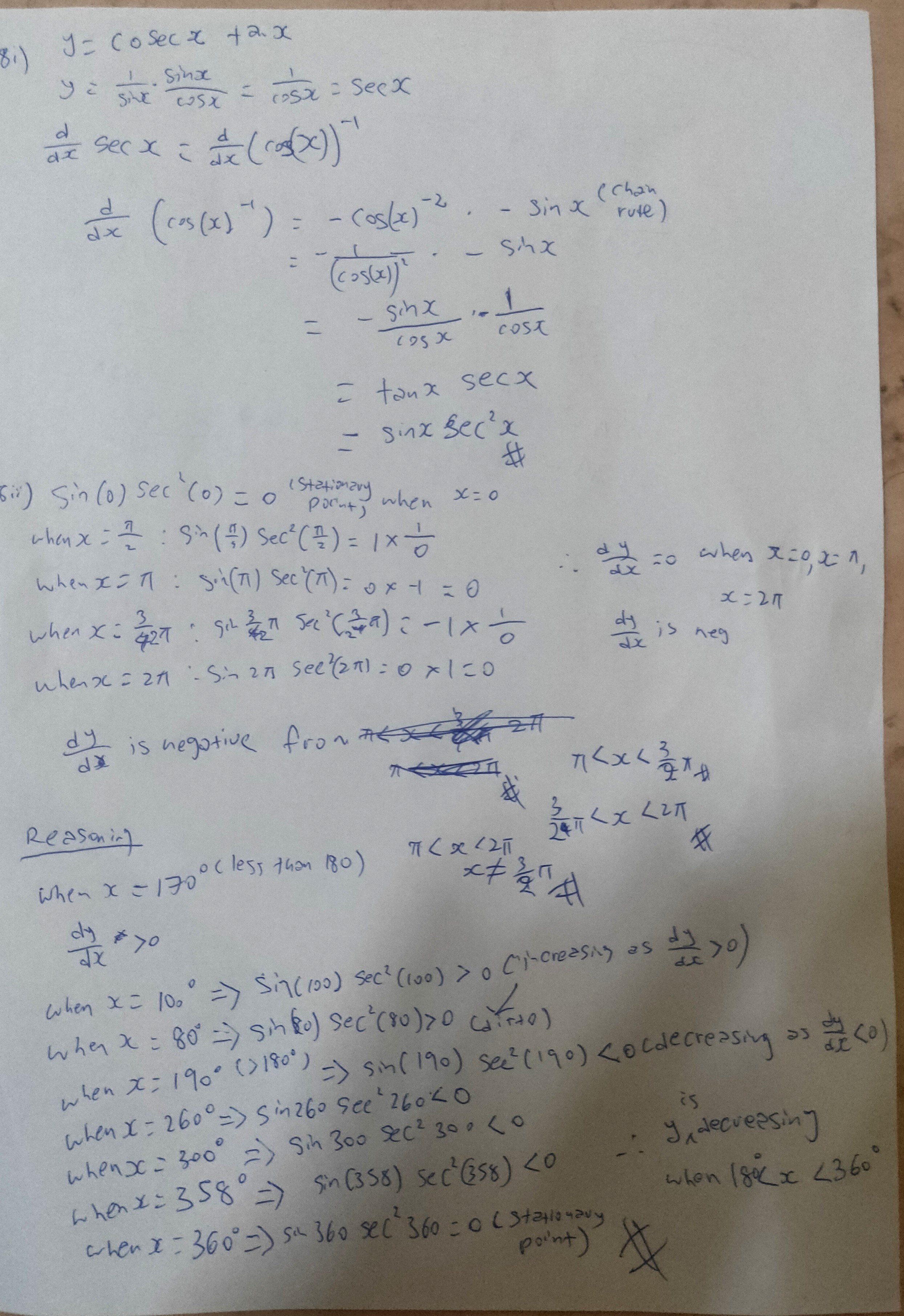Ignatius Yeo's answer to Irah Athirah's Secondary 4 A Maths Singapore question.
done
1 Upvotes
clear 0 Downvotes
For part b, apply first derivative test. First, find out where the stationary points are. Stationary point occurs when dy/dx=0. In this case, x=0, π, 2π are stationary points of curve y. Within the range between 0 and π, substitute any values into the domain of dy/dx, dy/dx is more than 0. When dy/dx is more than 0, y is increasing. Do the same for the range between π and 2π, dy/dx is negative except when x=3/2π. With this reasoning, hence, y is decreasing from π to 2π EXCEPT at 3/2π. In other words, from π to 2π but not including 3/2π. At 3/2π, there is an asymptote but I will not explain further as it is not in your syllabus. You may also apply second derivative test, but it is tedious at this level.
Date Posted:
4 years ago


